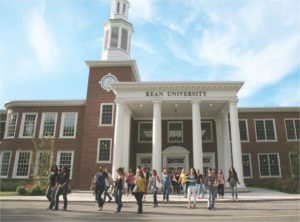Earlier this month, Margrady Research released a study called “Resilience: Will Urban Schools that Beat the Odds Continue to Do So During the COVID-19 Pandemic?” Analysts Jesse Margolis and Eli Groves started the project before coronavirus hit and so the report is divided into two parts. The first part updates 2015 data from the Center For Reinventing Public Education (CRPE), which calculated the percentage of students in 50 large U.S. cities that attend “beat the odds” schools, i.e., public charter or traditional school where student proficiency exceeds expectations. The results were mixed, but not in Newark, which was rated the best-performing urban district in the country. (See here for NJLB coverage of the 2015 CRPE report.)
The second part of the report examines whether beat-the-odds school districts (charter school networks are considered districts) have been able to translate their successful in-person models to remote learning practices at a similar rate as other districts.
Here are the key findings:
- Newark, Boston, and Pittsburgh have the three highest shares of students attending beat-the-odds schools. With 35% of students enrolled in schools that beat the odds, Newark has nearly double the share of the next highest city.
- The strong results in Newark and Boston are driven by relatively large and high-performing charter sectors, while the results in Pittsburg are driven by traditional district schools.
- Denver, Pittsburgh, and Seattle have seen the greatest growth in the share of students attending beat-the-odds schools between 2012 and 2018. Between 2012 and 2018, the number of students in Denver attending a beat-the-odds school increased by 11 percentage points, from 4% to 15%.
- During schools’ early transition to remote learning due to COVID-19, beat-the-odds districts have been twice more likely than other districts to implement attendance tracking, synchronous teaching, and synchronous student engagement.
Kyle Rosenkrans, CEO and founder of New Jersey Children’s Foundation,* which funded the report, said,
These findings tell a shared success story. Newark continues to show the nation that we can create a system of great public schools when district and charter schools work together to expand educational opportunity for all. Newark’s students, teachers, and leaders deserve immense credit for this historic achievement. When things got tough, the city banded together to create more unity, and study after study has shown that we now have a stronger school system for our children.
Key findings about Newark are:
- Newark has nearly double the rate of beat-the-odds public schools than the next highest city (35%); the results were even stronger for Black students, where Newark also leads the nation with 39% of their schools beating the odds.
- This success was driven by both the city’s high-performing charter school sector (75% “beat the odds”), as well as the city’s district schools which were twice as likely to “beat the odds” (16%) than the national average for district schools (8%).
- The geographic distribution of “beat the odds” public schools of any kind varied widely from a high of 44% in the city’s West Ward, to 42% in the North Ward, 36% in the Central, 27% in the South, and 17% in the East Ward.

For more coverage see The 74 and TapintoNewark.
* Brightbeam, which supports NJLB, is a grantee of NJ Children’s Foundation.





1 Comment